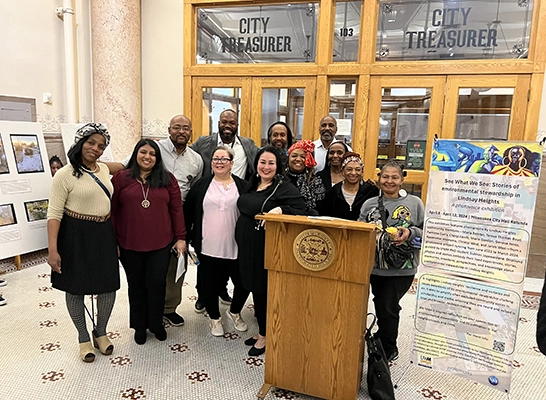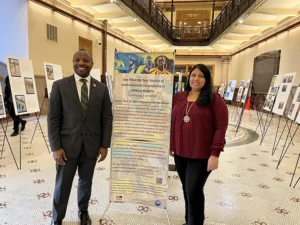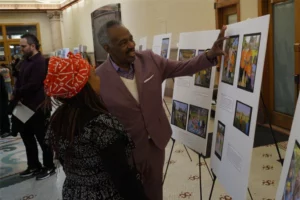Dulmini Jayawardana is a PhD candidate in the Department of Geography at UWM whose research philosophy is rooted in community-based participatory action research. Through her research, she tries to uplift and amplify voices in the Milwaukee community that are often left out or misrepresented, both in academia and in the media.
As part of her dissertation research, Jayawardana is exploring what civic environmental stewardship means, and how people can grow that stewardship in their own communities. She and her fellow researchers decided one way to answer those questions would be through a “photovoice” project.
“Photovoice is a form of participatory action research that combines participant-generated photography, discussions, and photo exhibitions to study community concerns from multiple perspectives,” Jayawardana said. “It is designed to engage people who usually don’t have a say in the decisions that affect their everyday lives. It invites participants to share and amplify their voices and lived experiences by being in control of the images and their narratives.”
The project culminated in an exhibition called “See What We See: Stories of Environmental Stewardship in Lindsay Heights,” which was held at the Milwaukee City Hall from April 8-12. The exhibition, curated by Jayawardana, showcased photographs taken by a group of Lindsay Heights community members, including Maria Beltran, Teresa Thomas-Boyd, Ramona Curry, Cheryl Ferrill, Marie Gordon, Geneva Jones, Rasammar Nsoroma, Christal West, and Jarvis West.

“My role in this project has been to support and facilitate the journey of these nine incredible photovoice participants, who are the true storytellers and heroes of this project,” Jayawardana said. “They wear many hats in the community: Community activists and leaders, environmental stewards, parents, and grandparents, who share a common mission to bring sustainability and revitalization to Lindsay Heights.
“Their photographs and stories are the heart of this exhibition, capturing the essence of environmental consciousness and community spirit.”
The photographs on display at City Hall represented community members’ experiences, stories, memories, and knowledge about environmental stewardship in Lindsay Heights. They explored the positives and negatives of caring for the environment, and shared accounts of environmental injustice, gardening, food deserts, community orchards, toxic environments, health and wellness, history, and art. The exhibit was also meant to celebrate and bring awareness to the resilience and victories of the neighborhood, while highlighting issues that have yet to be addressed.

“This exhibition is not just an artistic display; it is a call to action and an invitation to understand and engage with the issues that touch our lives daily,” Jayawardana said.
The event drew quite a crowd; Milwaukee Mayor Cavalier Johnson even made an appearance.
Jayawardana plans to bring the display to other areas of Milwaukee to allow more residents to hear the voices of the residents of Lindsay Heights.
This photovoice project was made possible thanks to our community partner City as Living Laboratory, through the Milwaukee WaterMarks Project. It is funded through an Advancing Informal STEM Learning (AISL) Grant from the National Science Foundation (#2115637). The photovoice exhibition is curated by Dulmini and the photovoice participants.
By Dulmini Jayawardana, Department of Geography
Edited by Sarah Vickery, College of Letters & Science
